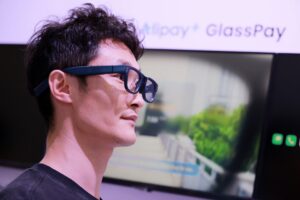
Bring up the name Fuji Xerox and an image of laser copiers and printers comes to mind. Building on its success, it has today become a Japanese enterprise communication tools and services company.
Its investment in research is in FX Palo Alto Laboratory, or FXPal. Set up in 1995 and based in Palo Alto, California, the unit is looking at technologies that can be applied for future workplaces.
Lynn Wilcox, its chief technology officer, was recently in Singapore. In an exclusive interview with Techgoondu, she discussed the ways of getting research ideas, artificial intelligence (AI) and collaboration efforts in Singapore.
Q: Where do you get new ideas for research?
A: Ideas come from everywhere. Our researchers also attend conferences, they pick up ideas they can apply or something they heard could spark off new research projects. Then all of these dots have to be joined, to allow us to imagine future work processes and lifestyle.
Ultimately, research is a two-way communication process. At FXPal, we continually engage customers to identify their challenges at work. We come to Singapore or go to Australia, visit our customers to see what they are doing, find out their problems.
But we also invite them and other corporate executives to our labs to see what’s available, and maybe that will trigger new ideas.
Ideas are the easy part, getting them to be practical and provide business value is hard.
Commercialising research is difficult. As researchers, we need to build the right technology at the right time so as to get business value.
Q: Your expertise is in ambient computing. Can you tell us what it is?
A: Ambient computing is based on Internet of Things technology which gathers information and data on our environment.
We’re leveraging the data to come up with new applications that let organisations and people work together more efficiently.
This is important because in offices of the future, you’ve a distributed workforce where people are working remotely. Ambient computing can be used to locate co-workers and find working space.
For example, a hospital workflow. We apply ambient computing to monitor patient traffic, when they arrive and which clinics they visit. Based on this, we can find out time spent waiting and in the consultation room, so we can make improvements.
Another application is to “make” workers happy. People work hard, they may forget to take breaks. Ambient computing can “sense” when people are not moving.
Using gamification techniques, we can “nudge” workers to take a break or move. This gets him or her stars which accumulate towards some form of reward.
From the management’s perspective, they can intervene when the technology “senses” that an employee is stressed, as in working on the laptop for many hours, not talking to anyone or moving about.
We understand that such technology is invasive. The way to do this is to show that the technology results in ensuring that workers remain healthy, efficient and productive.
Q: Are you working with Singapore organisations?
We are partnering with a hospital in Singapore on an AI deep learning project which is about estimating the level of pain by looking at the face.
Surgeons can recognise pain levels by looking at facial features, helping them address a clinical problem like how much morphine to prescribe after surgery.
Pain scores differ from patient to patient. Pain can be expressed in different ways, like creases between the eyes, turning of the lips.
To collect information, patients use mobile phones for 30 minutes each to log their facial expressions of happiness and sadness.
Using this data and standardising on facial keypoints, the AI system can be taught to recognise emotions, including pain.
Q: How are you leveraging AI in your research?
A: Our interest is in text generation, leveraging AI to generate summaries to annotate and describe images and textual content.
One application could be for medical report generation like summarising X-ray images and annotations.
It is an ambitious project because it needs lots of content. So we are partnering with hospitals where they have voluminous amount of medical images to use as training data for the AI system.






